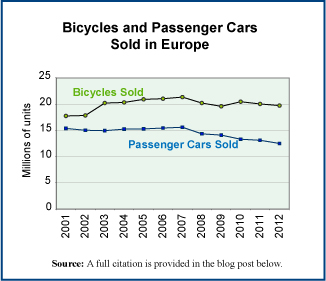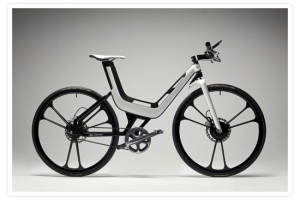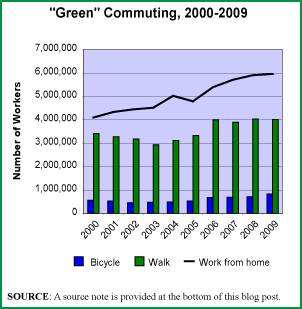
Year: 2020 and 2030
Market size: $230.2 million and $381.8 million, respectively
BMX racing made its Olympic debut in 2008 in Beijing, China. BMX Freestyle debuted at the 2020 Tokyo Olympics in the summer of 2021. In some cases, this may have been the first time some people had ever heard of these sports; however, they have been around for decades. BMX stands for Bicycle Motorcross. BMX racing began in the late 1960s or early 1970s in Southern California. Kids would modify their bicycles to make them more sturdy and race around empty dirt lots, performing jumps as their favorite motorcycle motocross stars did on the professional track. By 1977, loosely organized races were popping up all over the United States and the American Bicycle Association was founded to provide a national sanctioning body. It’s currently the largest BMX sanctioning body in the world, sanctioning tracks in both the United States and Canada. At the same time BMX racing was becoming popular, so was BMX Freestyle as kids would look for interesting places to ride, preferably with obstacles so they could perform stunts. By 1976, concrete skate parks were being converted for use by BMX riders, and more and more were being built around the country specifically optimized for BMX riders. By the end of the 1970s, competitions and teams were being formed and sponsors, magazines, and television started to take notice. In 1982, the American Freestyle Association, the sport’s first governing body, was founded. It organized and oversaw several competitions until 1989 when it ceased operations.
The popularity of BMX sports waned by the end of the 1980s, but since 2012, the sport has been gaining participants. In 2012, 1.86 million people aged 6 and above participated in BMX bicycling in the United States. By 2020, there were 3.88 million participants. As the popularity of BMX bicycling rose in both eras, so did the market for bicycles that could handle the rugged tracks and wear and tear of stunt riding. Today’s market size shows the total worldwide revenues for BMX bicycles in 2020 and projected for 2030. To put this data in perspective, according to Grand View Research, the overall global bicycle market totaled $54.44 billion in 2020.
Slowing down growth in this market is the high cost of equipment — bike prices range from several hundred to several thousand dollars — and the lack of biking infrastructure in many locations. As with the overall bicycle market, the BMX market saw added sales during the coronavirus pandemic, as more and more people turned to bicycling for fitness, entertainment, and in some cases, for a socially distanced alternative to public transportation. However, much of the parts used to construct BMX bicycles are manufactured in China. Factory shutdowns led to supply chain disruptions. This continued as factories opened but at reduced capacity, leading to several month delays for pre-ordered goods. Partial shutdowns at leading ports due to the pandemic are continuing to contribute to shipment delays.BMX bicycles are specifically designed for off-road racing and stunt riding. They are lighter in weight than other bicycles and optimized for sport riding. There are six categories of BMX bicycles. Race bikes, optimized for competition, have stiff frames and specific sizing, many made of carbon fiber. Dirt, park, and street bikes are optimized for the particular venue where they will be ridden. Skatepark-specific bikes, common for freestyle and recreational riders, have a wide variety of frame and wheel sizes. Retro bikes bring back the aesthetic of the BMX bikes of the 1980s with rugged frames and more rider room. The BikeLife1 style is newer and optimized for stunt riders who perform their stunts while doing wheelies in the street. BikeLife riders tend to prefer larger frames with larger wheels.
Most BMX bicycles sold have a 20-22 inch tube length and this is expected to continue to be the case through 2030, followed by 18-20 inches, less than 18 inches, and 22-inch and above. A majority of BMX bikes are bought by those who participate in BMX-related sports. Those that use these bikes for fitness comprise the second-largest group of buyers. Leading BMX bike manufacturers include Cult Crew, Elite BMX, Fit Bike Co., Haro Bikes, Kink, MafiaBikes, Pacific Cycles, Stolen BMX, GT Bicycles, and Redline Bicycles.
1 The Cycle Squad Maniaccs invented BikeLife in Harlem, NY in 2011. Source: Riley Missel, “#BikeLife: The Revolution That’s Taking Back the Streets,” Bicycling, October 28, 2018 available online here.Sources: “BMX Bikes Market by Top Tube Length (Less than 18 Inch, 18-20 Inch, 20-22 Inch, and 22 Inch & Above), Application (Sports, Fitness, and Others) and Distribution Channel (Online and Offline): Global Opportunity Analysis and Industry Forecast, 2021–2030,” Allied Market Research Report Overview, July 2021 available online here; “History,” USA BMX/BMX Canada, The American Bicycle Association, available online here; “BMX at the Olympics,” Union Cycliste Internationale, 2019 available online here; “Cycling BMX Freestyle,” The Tokyo Organizing Committee of the Olympic and Paralympic Games, 2020 available online here; “Extreme Sport of BMX Freestyle,” Bicycle History available online here; “Participants in BMX Bicycling in the U.S. from 2011 to 2020,” Statistia, February 2021 available online here; “American Bicycle Association,” Wikipedia, August 7, 2021 available online here; “American Freestyle Association,” Wikipedia, May 31, 2021 available online here; Ryan Fudger, “How the Coronavirus is Affecting the BMX Industry,” OurBMX, March 17, 2020 available online here; Jack Baruth, “The Best BMX Bikes for Every Rider — and Every Category,” Bicycling, April 26, 2021 available online here; Riley Missel, “#BikeLife: The Revolution That’s Taking Back the Streets,” Bicycling, October 28, 2018 available online here; Hanna Zlady, “The Shipping Crisis is Getting Worse. Here’s What It Means for Holiday Shopping,” CNN, August 23, 2021 available online here; “Bicycle Market Size, Share & Trends Analysis Report by Product (Mountain, Hybrid, Road), by Technology (Electric, Conventional), by End User (Men, Women, Kids), by Region, and Segment Forecasts, 2021 – 2028,” Grand View Research Report Summary, April 2021 available online here.
Image source: jhagen, “bmx-shadow-bicycle-jump-freestyle-1206367,” Pixabay, February 19, 2016 available online here.

 Not too long ago, Winter and its accompanying snow and ice would force bicyclists to put away their bicycles until Spring. But, in recent years, fat bikes have allowed bicyclists to ride outdoors year-round. Fat bikes have very large tires that provide traction on snow. They first came on the market a decade ago, and have gone mainstream just in the past couple of years, even though a fat bike usually costs more than $1,000. According to Jay Townley, a partner in Gluskin-Townley Group, a consultant and market research company focused on the bicycle industry, “[t]he industry, quite frankly, needed something. If anything, the fat tire bike helped to keep a stable bike industry instead of losing volume.”
Not too long ago, Winter and its accompanying snow and ice would force bicyclists to put away their bicycles until Spring. But, in recent years, fat bikes have allowed bicyclists to ride outdoors year-round. Fat bikes have very large tires that provide traction on snow. They first came on the market a decade ago, and have gone mainstream just in the past couple of years, even though a fat bike usually costs more than $1,000. According to Jay Townley, a partner in Gluskin-Townley Group, a consultant and market research company focused on the bicycle industry, “[t]he industry, quite frankly, needed something. If anything, the fat tire bike helped to keep a stable bike industry instead of losing volume.”  In the United States, more than 52 million people age 6 and above participated in wheel sports, defined as bicycling and skateboarding, in 2016. The vast majority, 45.8 million, were bicyclists; 6.4 million were skateboarders. Among bicyclists, 3.8% participated in BMX, 18.8% participated in mountain biking or rode primarily on non-paved surfaces, and the rest, 77.4%, rode their bikes primarily on roads and other paved surfaces.
In the United States, more than 52 million people age 6 and above participated in wheel sports, defined as bicycling and skateboarding, in 2016. The vast majority, 45.8 million, were bicyclists; 6.4 million were skateboarders. Among bicyclists, 3.8% participated in BMX, 18.8% participated in mountain biking or rode primarily on non-paved surfaces, and the rest, 77.4%, rode their bikes primarily on roads and other paved surfaces.

